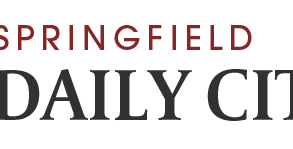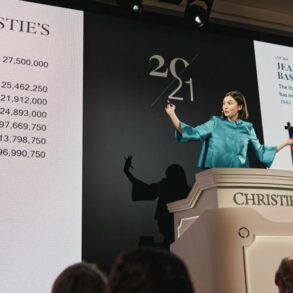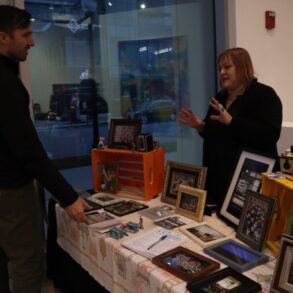Art Market
Hilary Joo
Nov 19, 2024 6:43PM
Interior view of West Bund Art & Design, 2024. Courtesy of West Bund Art & Design.
In this series, we hear from Hilary Joo, a Seoul-based sales manager and gallery partnerships lead at Artsy, for her thoughts on what’s happened in the Asian art market this quarter.
A strong Shanghai Art Week
Interior view of ART021 Shanghai Contemporary Art Fair 2024. Courtesy of ART021 Shanghai Contemporary Art Fair 2024.
Advertisement
China’s most significant commercial art event, Shanghai Art Week, took place in early November. Two major art fairs occurred during the week—West Bund Art & Design and ART021 Shanghai Contemporary Art Fair—along with a stuffed slate of museum and gallery exhibitions.
Although expectations for the fairs were conservative this year, dealers reported the sales were stronger this year overall compared to 2023, and several of the galleries who participated expressed satisfaction with how the week went.
“I was the only Korean gallery to exhibit at ART021 Shanghai this year, which made it even more special,” said Soo Jeong, the director of Seoul’s Suppoment Gallery. “The preparation process was not easy, but the professionalism and kindness of the fair staff on-site really stood out, and Chinese collectors were serious and passionate.”
The gallery’s booth featured works by Korean artists Lee In Seob, Yoo Mi Seon, and Lee Soo Hong, which were met with a “great response from the collectors,” Jeong noted.
As these fairs grow more international, however, there are still challenges to address. Difficulties with international payment systems and the need to confirm a list of artworks by August were among some of the issues cited by galleries.
Still, West Bund and ART021 Shanghai continue to solidify their positions as the biggest moments on China’s art calendar. Both fairs remain key touchpoints for galleries to meet regional collectors and interact with the local market. I’m curious to see how they will develop in China’s complex art market.
Toda Building heralds a new chapter for Tokyo’s art scene
Interior view of Yutaka Kikutake Gallery. Courtesy of Yutaka Kikutake Gallery.
Since last year, my Japanese gallery friends have been excitedly telling me about a “new mixed-use complex building” opening in Kyobashi, Tokyo. The complex, named the Toda Building, finally opened on November 2nd, just in time for the city’s art week.
Considering that most Japanese contemporary galleries in Tokyo are located in Roppongi, Ginza, or Tennoz, hearing about this new building in Kyobashi piqued my curiosity. Kyobashi is quite an interesting neighborhood. It lies between the famous Ginza and Mrunouchi (where many of Tokyo’s large corporations are located), giving Kyobashi the feel of a business-focused district. However, alongside the corporate buildings and Japanese businessmen filling the streets, its small alleys contain many longstanding antique and modern art galleries. For me, Kyobashi has always been a mix of a formal industrial atmosphere with a touch of an artistic vibe.
On the third floor of this building, four tastemaking Japanese contemporary galleries—Taka Ishii Gallery, Tomio Koyama Gallery, Yutaka Kikutake Gallery, and KOSAKU KANECHIKA—have each opened new spaces.
“In the area within walking distance from Kyobashi, there are many galleries and museums that handle important works from the modern to post-war periods,” said Yutaka Kikutake, the director of Yutaka Kikutake Gallery. “Having contemporary galleries in Toda Building allows for a connection to history while presenting new development to visitors, which I believe is very important.”
As well as being a new hub for some of Tokyo’s most important commercial galleries, the Toda Building will also run public and educational programs. “If these programs and galleries can work together, it will not only focus on commercial aspects of art but also provide an opportunity to explore greater public significance,” added Kikutake. “Personally, I would like to invite students from nearby elementary schools to have artwork viewings and focus on education programs.”
APAC galleries out in force at Frieze London
Lee Bae, installation view of Johyun Gallery’s booth at Frieze London, 2024. Photo by Linda Nylind. Courtesy of Frieze and Linda Nylind.
Frieze London wrapped up its 21st edition in October, reaffirming its key role in the art world’s fall calendar by bringing galleries and collectors from all around the world to the British capital. This year, I must say I noticed the presence and prominence of APAC galleries in particular.
Right across the fair’s main entrance, the booth of Kolkata-based gallery Experimenter presented works by Bani Abidi in multiple mediums (photography, film, paintings, etc.), which grabbed my attention immediately.
As I walked further into the fair, Johyun Gallery from Busan, Korea, had its booth buzzing with crowds of visitors taking photos and asking questions about works by the Korean artist Lee Bae, who is known for his “Brushstroke” pieces.
At Frieze Masters, Melbourne’s D’Lan Contemporary presented beautiful works by Paddy Nyunkuny Bedford, a very well-known Aboriginal artist. The gallery showcased both works on canvas and works on paper in gouache.
Although the art market is still in a tricky place, art fairs like Frieze continue to offer viewers an experience that can only be had in an art fair. This is of particular importance for APAC galleries, which use the fair as a crucial touchpoint for connecting with international clients and new audiences alike.
Mire Lee’s marvelous Turbine Hall installation
Mire Lee, installation view of ” Hyudai Commission: Open Wound” at the Tate Modern Turbine Hall, 2024. Photo by Oliver Cowling with Lucy Green. Copyright Tate. Courtesy of Tate.
While I was in London in October, I received a text message from my good friend that made my visit even more exciting. “Did you know that Mire Lee is the youngest artist of all to exhibit at Tate Modern’s Turbine Hall?” her message read.
When I visited Tate Modern to see Lee’s exhibition “Open Wound,” I encountered an enormous installation that was both stunning and a bit grotesque at the same time. There were light pink–colored fabrics (which Lee refers to as “skins”) floating down from the ceiling, and in the center of the exhibition hall, there was a turbine slowly spun with liquid dripping to the floor.
Tate Modern’s Turbine Hall exhibitions have always been some of my favorites, known for their conceptual installations. This time, Lee’s work takes a viewer back to the museum’s past, when it used to be a Bankside Power Station. “Open Wound invites us to revel in contradictory emotions: from awe and disgust to compassion, fear, and love,” says Tate’s explanation of this exhibition.
Hilary Joo




